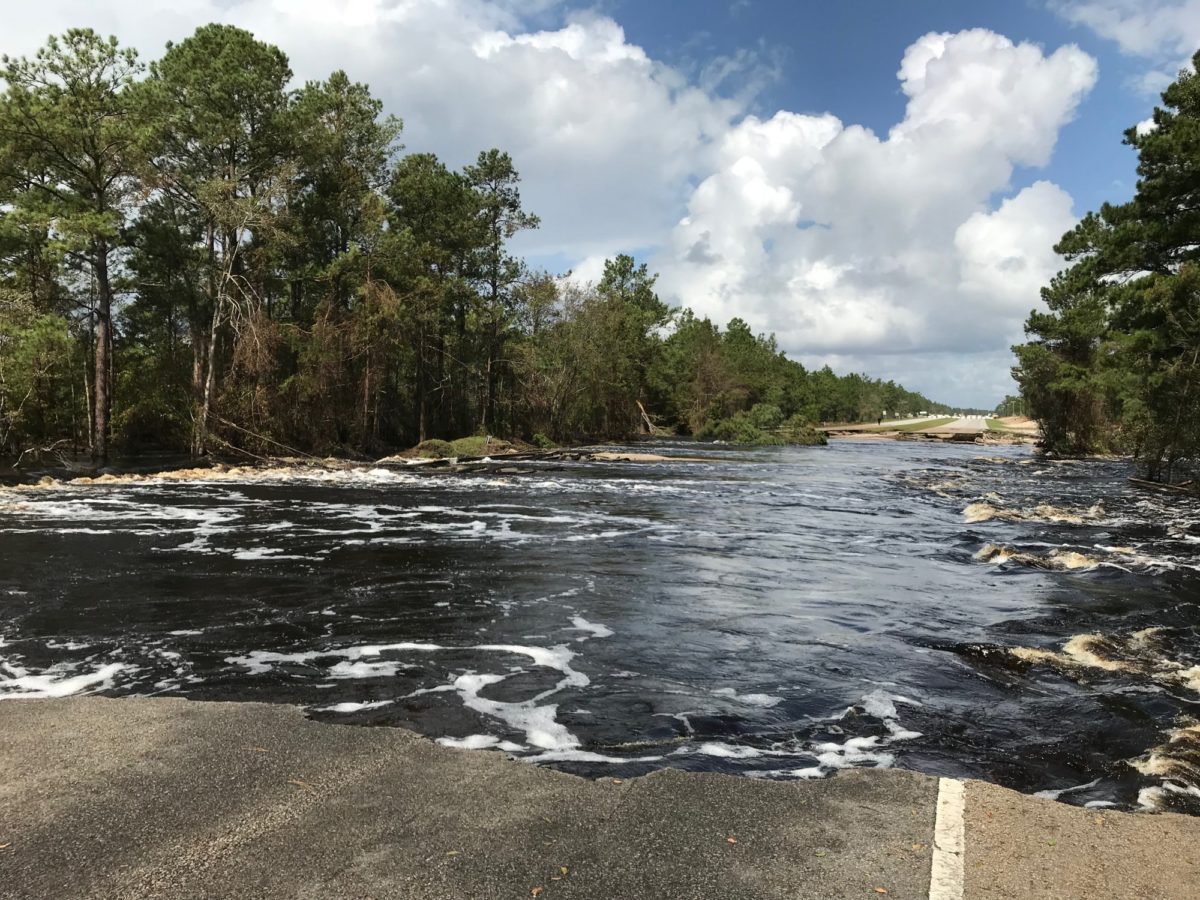Are you prepared should a hurricane or tropical storm decide to visit us this year? If you are new to the Cape Fear area, you might wonder what steps you should take now to be ready if Mother Nature sends a big blow our way. Hurricanes and tropical storms produce wind, rain, storm surge and flooding. A threat to life and property from storm surge and flooding occurs along our coastal, low-lying/tidal areas but flooding can travel many miles inland with devastating results.
Keep informed with updated weather reports for your area. For those who reside in a coastal area and wonder if you are vulnerable to inundation from storm surge, check NOAA’s posted storm surge risk maps. Next, determine if you reside in an evacuation zone. For those residing inland, your life and property may also be at risk. Slow-moving or weak hurricanes and tropical storms can produce significant rainfall. In recent tropical storms, numerous deaths occurred due to inland fresh water flooding. Wherever you are located during dangerous storms, when advised by local authorities, evacuate.
Remember, never drive through flooded streets, roads, or highways. You cannot see the depth of the water or if the pavement beneath the water has washed away. If your vehicle becomes stranded, you and your vehicle could be swept away in flood waters.
Wind damage from hurricanes and tropical storms can occur not only along the coastline but hundreds of miles inland. Coastal winds are usually higher than sustained inland winds but inland gusts can be similar to sustained coastal winds.
How to prepare your home before a hurricane or tropical storm:
Review your insurance policy. Flood insurance, if not available through your private insurer, must be purchased through the National Flood Insurance Program and there is a 30-day waiting period. All NFIP partner companies offer identical coverage and rates, eliminating the need to seek competitive quotes from multiple FEMA-approved insurance providers.
Consider purchasing a home generator installed outdoors by a reputable company. Remember, do not run a home generator indoors.
Install shutters or be prepared to install plywood to cover all windows and doors. Do not leave windows and doors open to relieve pressure; do not use tape to secure windows and doors.
Keep trees and shrubs pruned.
Make an emergency evacuation plan for yourself and family to stay in a shelter, with relatives or at an inland hotel away from the path of an approaching storm.
Make emergency plans for your pets; shelters and hotels may not accept them.
Keep vehicles fueled and/or charged for possible evacuation.
Prepare an emergency supply kit of food, water (one gallon per person per day for three days minimum), medicines, first aid kit, important documents, flashlight, blankets, pillows, extra clothing, etc. Make a note to include cell phones and chargers, wallets and purses. Keep adequate cash on hand for emergencies.
Prepare an interior room on the lowest floor of your house that is not prone to flooding as a storm shelter.
Store all outdoor items that are not securely tied down. Loose items, like tables, chairs, flower pots, toys, etc., could become missiles during a storm.
How to evacuate your home:
Evacuate promptly when advised by authorities.
Notify outside family and friends where you can be reached.
Unplug appliances and turn off electricity, gas, and main water valve.
Take your emergency supply kit and other necessary items with you to a safe location.
Return to your home after being notified by authorities.
Guidelines for staying in residence:
Secure yourself, family and pets in your prepared interior room storm shelter with your emergency supply kit. Protect heads with helmets or pillows. Keep updated from your county emergency management office and be prepared to evacuate if necessary.
Fill bathtubs with water for flushing toilets and fill large containers with water for cleaning should domestic water become unavailable.
If electric power is lost, turn on your home generator if you have one; if not, turn off major appliances and air conditioning to avoid a power surge when power is restored. Open refrigerators and freezers as little as possible until power is restored.
Important guidelines no matter the severity of the weather conditions—be patient and help your neighbors to stay safe and survive.
For more hurricane and storm preparedness information, contact your local government authorities.







